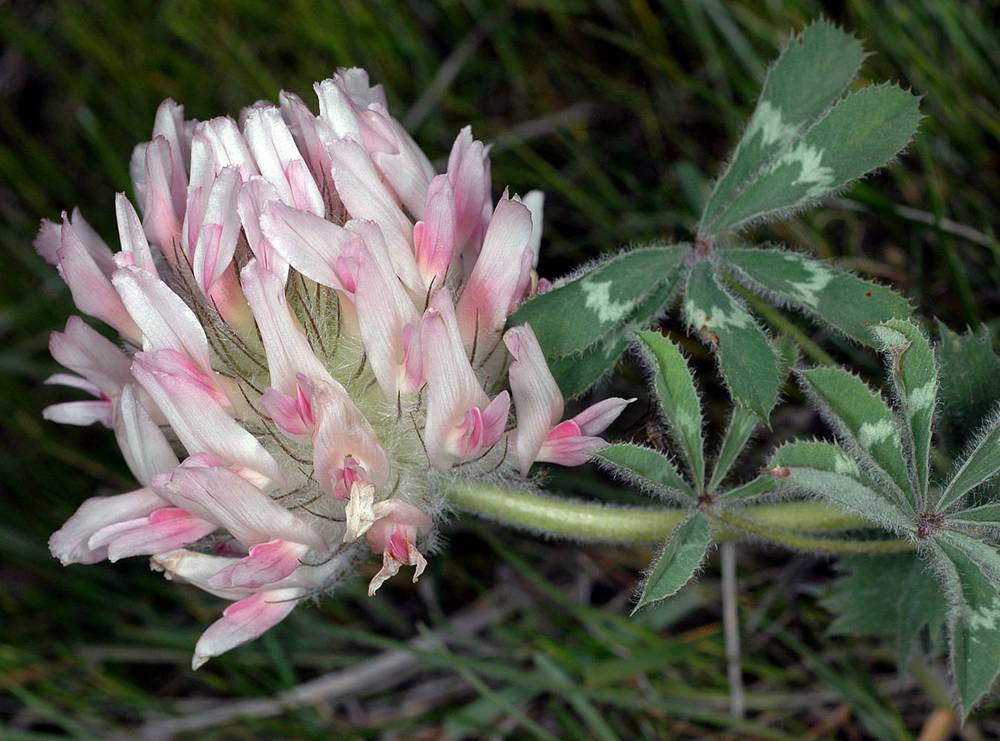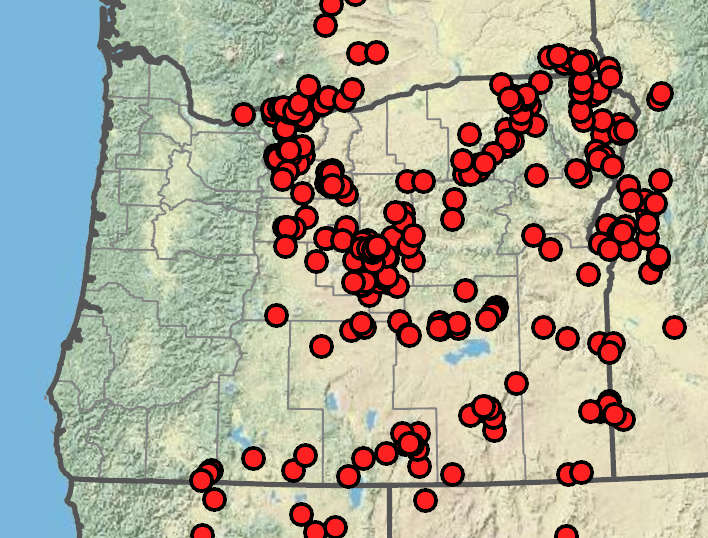Trifolium macrocephalum
Trifolium subterraneum
big-headed clover, largehead clover
subclover, subterranean clover
palmate;
leaflets (5)7–9, broadly to narrowly obovate, often folded, 10–27 × 4–11 mm, bases cuneate;
margins serrulate or irregularly lobed;
veins thickened, especially distally;
tips rounded or truncate, apiculate;
surfaces abaxially villous, adaxially sparsely villous to glabrate;
petioles 10–140 mm;
petiolules 0.9–1.2 mm;
stipules ovate, obovate, or oblong, 10–30 mm;
margins entire.
palmate;
leaflets 3, broadly obcordate, 8–28 × 10–30 mm, bases cuneate, widely spaced;
margins mostly entire, slightly dentate distally;
veins delicate;
tips emarginate;
surfaces appressed-sericeous;
petioles 10–200 mm;
petiolules ~1 mm;
stipules ovate, 5–30 mm;
margins entire or slightly toothed, ciliate;
tips acute to acuminate.
terminal, 20–32-flowered, globose or ovoid-ellipsoidal, 25–80 × 30–70 mm;
involucres absent;
bracteoles broadly ovate, membranous; ? 0.5 mm, truncate.
axillary, globose or cylindrical, 5–15 × 8–15 mm; bur-like in fruit;
involucres cup-shaped;
bracts ± connate, 5–15 mm, glabrous or inconspicuously hairy;
lobes 8–12; ovate, sharply toothed;
bracteoles absent.
20–80 mm.
15–74 mm; in fruit curving, growing into ground.
erect, 1–1.5 mm.
absent.
20–30 mm;
calyces campanulate, 10–22 mm, villous;
veins 10–15;
tubes 2.5–4 mm;
lobes subulate, subequal, 2–4 × tube length, plumose;
orifices open;
corollas 20–28 mm, white; creamy white, or pinkish;
banners ovate or oblong, 20–28 × 10–13 mm;
tips rounded or slightly emarginate;
keel petals deep pink.
outer 2–8, fertile;
calyx tubes often with purple band at top;
corollas 7–10 mm, white, pink, or pink-striped;
banners ovate-elliptic, 7–10 × 1.5–2 mm;
tips rounded; inner many, sterile;
calyces stalk-like, with 4–5 bristles at tip;
corollas absent, recurving and forming burs to surround fruits, delivered to ground by growing peduncles.
longitudinally dehiscent; ovoid, 4–5 mm; ? calyces.
obovoid, 3–4 mm; ? calyces.
1–2; mitten-shaped to ellipsoid, 2.5–3 mm, yellow or reddish; smooth.
1, ellipsoid, 2.6–3 mm; purplish black; smooth; dull.
=32, 48.
=16.
Trifolium macrocephalum
Trifolium subterraneum
Rocky places, hard, compacted clay gumbo, lava beds, sage-covered slopes. Flowering Apr–Jul. 0–2200 m. BR, BW, Col, ECas, Lava, Owy. CA, ID, NV, WA. Native.
Trifolium macrocephalum has the largest inflorescences of any species in the genus. The name T. megacephalum is an illegitimate replacement name for Lupinaster macrocephalum.
Meadows, roadsides, disturbed areas. Flowering Apr–Jun. 0–900 m. CR, Est, Sisk, WV. CA, WA; north to British Columbia, southeastern US; Africa, Asia, Australia, Europe. Exotic.
Trifolium subterraneum is native to Eurasia and northern Africa and has become weedy in areas where it has been cultivated, such as South Africa and Australia. It was first introduced by the USDA in about 1921 as a pasture crop; it is utilized as such in the western and southern United States (McGuire 1985).
Michael Vincent
Michael Vincent
- Local floras:
BC,
CA,
OR,
WA
- Local Web sites:
CalFlora,
CalPhotos,
Flora NW,
PNW Herbaria
WildflowerSearch
iNaturalist (observations)
USDA Plants Database
- LBJ Wildflower Center
- SEINet
- Plants of the World Online
- Encyclopedia of Life
- Wikipedia
- Google Image Search





